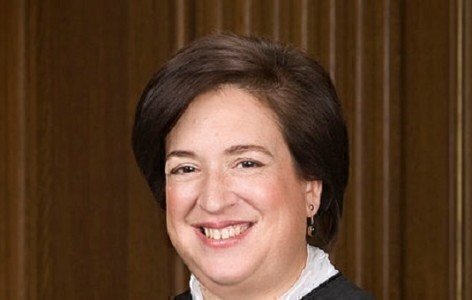Justice Elena Kagan’s recusal in the Fisher v. University of Texas affirmative action case may have been a significant factor in the Court’s deliberations. So why do Justices have to take a break from cases?
 Having acted as Solicitor General before her nomination to the Supreme Court was confirmed in August 2010, Kagan’s “conflicts of interest” have been numerous during her first year at the Court. . Between October 2010 and June 2011, Kagan sat out for 28 of the 78 cases heard. While her absence didn’t create the deadlock some critics had predicted, the effects of her lost input are impossible to measure, becausebeing recused from a case denies a judge not only a vote at the end, but a place at the deliberation table.
Having acted as Solicitor General before her nomination to the Supreme Court was confirmed in August 2010, Kagan’s “conflicts of interest” have been numerous during her first year at the Court. . Between October 2010 and June 2011, Kagan sat out for 28 of the 78 cases heard. While her absence didn’t create the deadlock some critics had predicted, the effects of her lost input are impossible to measure, becausebeing recused from a case denies a judge not only a vote at the end, but a place at the deliberation table.
In 2016, Kagan is further removed from her former Solicitor General role, making her recusals increasingly infrequent. That being said, Fisher v. University of Texas at Austin is a high-profile case connected with Kagan’s original legal counsel. Kagan also is the only judge with experience in higher education admissions. . With a potential landmark decision on the line, the nature and merits of recusal prove fair fodder for debate.
Frequent recusals were Thurgood Marshall’s problem in 1967 before they were Kagan’s. The legendary lawyer was the Solicitor General under President Lyndon B. Johnson before being nominated to the Supreme Court. Marshall recused himself from more cases in his earlier cases than Kagan. Recusals, however, are not unique to former Solicitor Generals. Any conflict of interest can theoretically disqualify a judge. Sandra Day O’Connor removed herself from cases regarding telecommunications firms on account of her stock-owning. Clarence Thomas was recused himself from United States vs. Virginia because of his son’s enrollment at The Virginia Military Institute. From financial incentive to familial bias, recusal has proved far more pervasive in modern times than in the early Supreme Court.
Consider Chief Justice John Marshall, for instance. In the landmark Marbury v. Madison decision, Marshall set not only a precedent for judicial review, but for lax recusal standards. The case, which was centered on then Secretary Of State James Madison, ultimately intertwined Marshall as well. He was acting Secretary Of State at the time of the “midnight judge” nominations, so Marshall was essentially presiding over a case in which he had been heavily involved. Though 10 years later he recused himself from the Martin v. Hunter's Lessee hearings, it is evident that guidelines for judicial disqualifications were far less stringent and clear in the early 19th Century than they are today.
Before Marbury v. Madison. English common law called for judicial disqualification only when financial interests were at stake. It was not until 1821 that this sentiment was expanded upon, when relatives of a judge involved as parties suddenly cause for recusal under U.S. law. By 1891, Congress enacted what would later be codified as 28 U.S.C.§ 47. This expansion disqualified judges from presiding over an appeal they had previously tried. By 1911, these specific statues were joined by vaguer guidelines ubder28 U.S.C. § 144, which entitles a party to secure recusal of a judge by supplying an affidavit that the judge has “a personal bias or prejudice” against the affiant or for the opposing party.
However, as a restrictions have grown, so, too has backlash. Enter the “duty to sit” concept. Widely accepted in 1972 through Laird v. Tatum, the “duty to sit” idea argues that while it is a judge’s duty to step down when conflicts of interests are at stake, it is equally his or her duty to stay the course when these said conflicts of interest are unreasonable or unconvincing.
While current precedent follows that the judge disqualifies him or herself, the duty to sit is often re-invoked when a judge, particularly a Supreme Court Justice, authors an opinion after declining recusal for suspect or controversial cases. Antonin Scalia, among others, has authored such an opinion denying a recusal motion in 2004 after he didn’t recuse himself from a case involving his friend, Vice President Dick Cheney. Scalia cited numerous incidents where Justices and Presidents saw each other socially, but didn’t discuss cases.
While Kagan’s “impartiality might reasonably be questioned” under 28 U.S. Code § 455, the question remains whether she possesses the duty to sit. With Scalia’s passing in February and Kagan’s recusal, the seven remaining judges were left to decide a case in which affirmative action could potentially be affected nationally.
The debate remains. Are guidelines for recusal too restrictive or too vague? Can a Supreme Court justice’s pertinent expertise ever override a potential bias? That may be up to the next President to decide, based on the background and potential conflicts inherent in Scalia’s eventual replacement.
Olivia Fitzpatrick is a student at the University of Pennsylvania and a National Constitution Center intern.







